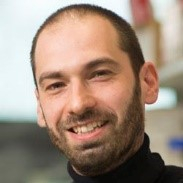Helgo SchmidtInstitut de génétique et de biologie moléculaire et cellulaire (IGBMC) - CNRS / Inserm / Université de Strasbourg
Mes recherches
I received my PhD in 2010 from the University of Lübeck, Germany, for my crystallographic work on the bacterial glycosyltransferase WaaA. This membrane-associated enzyme plays a critical role in the biosynthesis of lipopolysaccharides, essential constituents of the outer membrane of Gram-negative bacteria. My work allowed crucial insights into the mechanism of this important enzyme (Schmidt et. al, PNAS, 2012) and was recognized by the University of Lübeck with the Henrich-Dräger Science award. After my PhD, I joined the group of Andrew Carter at the MRC Laboratory of Molecular Biology (LMB) in Cambridge, UK, where I worked on the microtubule associated motor protein dynein. My work on this fascinating molecular machine resulted in two seminal publications providing the first high-resolution crystal structures of two important dynein nucleotide states (Schmidt et al., NSMB, 2012 and Schmidt et al., Nature, 2015). During my postdoc at the LMB, I obtained the MRC special scheme award twice. Since March 2017 I am a team leader at IGBMC. In the same same year I got recruited to the CNRS as CR-1. The ATIP avenir grant that I obtained in 2017 helped me to set up my own lab at the IGBMC where I started working on the dynein related ribosome maturation factor Rea1.
Mon projet ATIP-Avenir
The Structure and Mechanism of the Ribosome Maturation factor Rea1
Eukaryotic ribosomes are complex molecular machines whose assembly is tightly controlled to ensure faithful protein biosynthesis. Ribosome assembly is initiated in the nucleolus by the transcription and processing of ribosomal RNAs, which together with ribosomal proteins form pre-60S ribosomal subunits. The pre-60S subunits mature by transiently interacting with various assembly factors during cytosolic export. The nearly 5000 residues long maturation factor Rea1 is vital for the export of the pre-60S subunit. Rea1 belongs to the AAA+ protein family and harnesses the energy of ATP hydrolysis to mechanically remove two assembly factors from the pre-60S subunit. Despite its key importance, Rea1 structure and mechanism are poorly understood. We will use cryo-electron microscopy, x-ray crystallography, in-vitro and in-vivo activity assays to elucidate the mechanistic basis of two crucial ribosome maturation steps, and to create insights into the inner working of AAA+ machines.
